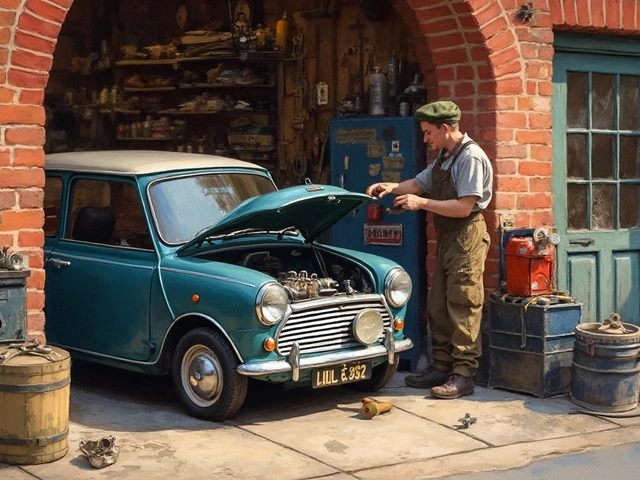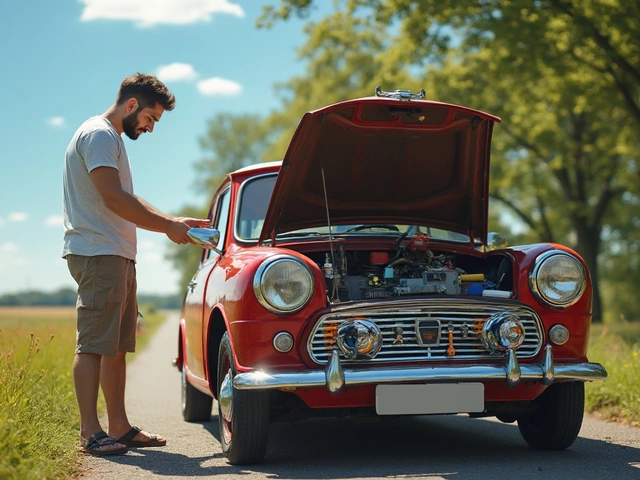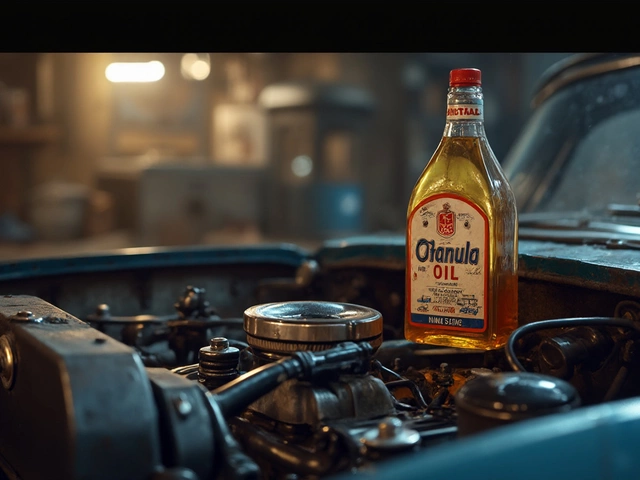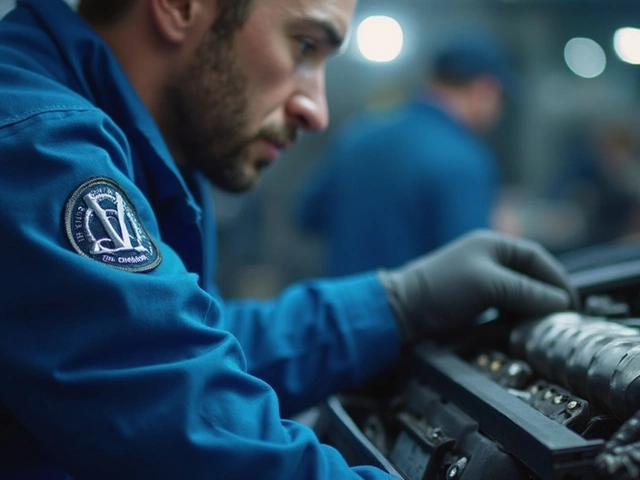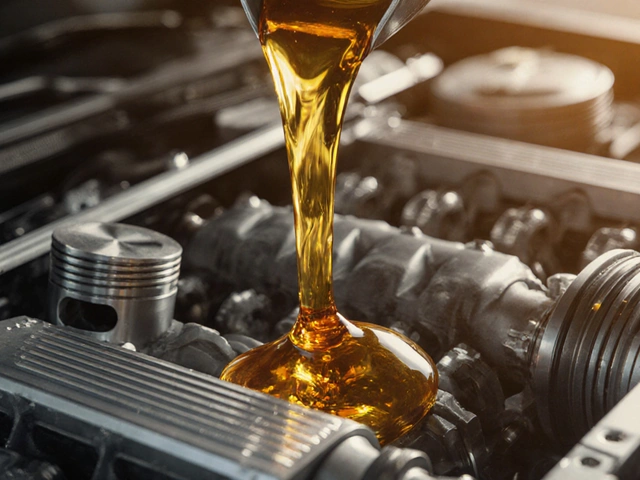The world of car modifications can often feel like a labyrinth, with myriad options catering to performance enthusiasts and casual drivers alike. If you're looking to dial up your vehicle's responsiveness and handling, a Stage 2 clutch kit might just be what you need.
These kits, while more robust than their standard counterparts, come with their own set of characteristics and advantages which can transform the way your car handles on the road. Whether you’re someone who frequently revs high, or if you're simply curious about upgrading, understanding these components can markedly enhance your driving experience. Let's take a closer look at what defines a Stage 2 clutch kit, and how it might just be the perfect fit for you and your ride.
- What Is a Stage 2 Clutch Kit?
- Advantages Over Standard Clutch Kits
- Who Should Consider a Stage 2 Clutch?
- Installation and Maintenance Tips
- Interesting Facts and FAQs
What Is a Stage 2 Clutch Kit?
Diving into the world of car modifications, one might encounter the term Stage 2 clutch quite often, especially in the realm of performance upgrades. So, what exactly is a Stage 2 clutch kit? Essentially, it's an upgrade from the stock clutch kits typically found in factory vehicles. These enhanced kits are engineered to withstand more power and torque, making them highly desirable for those who exceed stock performance levels either through tuning, racing, or simply spirited driving. Often, they are made from advanced materials like Kevlar and ceramic that offer greater durability under stress-intensive conditions, providing superior grip while minimizing slippage.
A key feature of the Stage 2 clutch kit is its ability to engage and disengage more efficiently than standard kits. This makes them particularly beneficial for high-performance settings where swift and smooth power transitions are crucial. Usually, Stage 2 kits incorporate a reinforced pressure plate, a high-quality friction disc, and sometimes a lighter flywheel, all contributing to improved throttle response and quicker gear shifts. Note that these upgrades result in a slightly stiffer pedal feel, which could be a trade-off for drivers who prioritize comfort over performance. Many car aficionados swear by these kits for their ability to handle increased power levels without compromising reliability.
Interestingly, a Stage 2 clutch kit is not limited to those who race professionally but appeals to anyone looking to enhance their vehicle's performance beyond base levels. The mix of heightened durability and efficient power delivery translates into a more engaging driving experience, be it on the drag strip or a winding mountain road. According to an article from Car Enthusiast Magazine, "A Stage 2 clutch kit transforms your driving experience by seamlessly managing added horsepower and torque while maintaining daily driving manners." This underscores the versatility and reliability that make these kits so appealing.
For those who love numbers, consider exploring the specifications of different Stage 2 clutches. Many kits are rated to handle 30% more torque than factory options, revealing their capability in dealing with modified engines. Some may even specify a clamping force, which indicates the increased load the clutch can handle. Understanding these specs can provide valuable insight into how a particular kit might suit your driving style and vehicle demands. While options vary by make and model, the promise of sustained performance under stress is a constant across the board when it comes to Stage 2 upgrades. Exploring these options could unlock new avenues for your driving adventures.
Advantages Over Standard Clutch Kits
A Stage 2 clutch kit emerges as a sought-after performance upgrade among automotive enthusiasts, primarily known for its enhanced durability and ability to handle increased power output. Unlike standard clutches, Stage 2 clutches often feature a more robust friction material and a stronger pressure plate. These components collectively ensure the clutch can withstand excessive heat and friction, making it an ideal choice for vehicles with performance modifications. A Stage 2 clutch can not only manage the increased torque produced by a tuned engine but also promises better engagement and disengagement than its stock counterpart, significantly improving drivability in high-performance scenarios. This is especially beneficial when frequenting a racing circuit or engaging in spirited driving.
Interestingly, the material used in a Stage 2 clutch often includes Kevlar or a ceramic composite, both known for their high thermal resistance and longevity compared to organic materials typically found in standard clutches. This difference accounts for the increased price of Stage 2 kits, but it also justifies the performance gains. These specialist materials offer a higher coefficient of friction, which translates to an improved grip during operation, minimizing the risk of clutch slippage under load. A fellow enthusiast once said, "The Stage 2 clutch kit doesn't just hold power; it reassures you during every gear shift, even when you're pushing your limits."
- Performance Racing Magazine
Stage 2 clutches are designed to handle the demands of tuned and modified vehicles, supporting horsepower and torque levels that would overwhelm an average clutch. This makes them exceptionally suited for vehicles equipped with turbochargers or superchargers, where power output fluctuations are significant. While the clutch pedal may feel slightly stiffer due to the reinforced pressure plate, this corresponds with a more precise engagement point, leading to a firmer and more confident driving experience.
Moreover, for those who see their car as an extension of themselves, installing a Stage 2 clutch doesn't just serve performance—it adds a personal touch to the driving experience. By bridging the functional gap between daily commute usability and motorsport-level performance, it satisfies the need for reliability under pressure without sacrificing responsiveness. Of course, it's not without its considerations; sometimes, the increased operational noise due to the friction materials can be noticed. However, for many, this is a small trade-off for the enhanced performance benefits.
In essence, if your car often finds itself on winding roads or if you're eager to feel every bit of your engine's potential, a Stage 2 clutch kit extends the possibilities. It balances power and precision in a way that transforms mere driving into pure engagement, making it an upgrade well worth considering for those who live for the thrill of the drive.

Who Should Consider a Stage 2 Clutch?
Choosing a Stage 2 clutch kit isn't just for those who dabble in the superficial realms of car aesthetics; it's for the unwavering enthusiasts who crave something more—those who want their vehicle to perform at its peak, who regularly find themselves pushing speedometers to exhilarating heights, or undertaking rigorous driving that transcends ordinary commutes. This upgrade offers much more than a mere change in driving dynamics; it's a key instrument for unlocking your car's latent potential. If you're someone who participates in track days, drag races, or simply enjoys spirited driving on country roads, it's likely that a Stage 2 clutch is right up your alley. These clutches are designed to handle increased torque and high RPM situations without flinching, thanks to their tougher build and more sophisticated design compared to the standard clutch setups.
The beauty of a Stage 2 clutch lies in its ability to absorb greater forces, making it a fantastic fit for cars that have undergone performance tuning including turbocharging or supercharging. It's also the preferred choice for vehicles with modified engines where stock clutches simply won't cut the mustard anymore. Hence, if you've invested in aftermarket improvements that boost your engine's output, aligning your clutch performance with your engine's upgraded capabilities will ensure a smoother, more reliable power transfer, translating into better acceleration and performance. According to performance car expert Jamie Harrison, "A Stage 2 clutch really shines when you need to put down all that extra power efficiently, without sacrificing comfort in everyday driving."
Of course, it's essential to understand the commitments and changes involved. A Stage 2 clutch can be a bit more aggressive than a standard clutch, which means you'll feel the difference in engagement. This can be both exciting and demanding, as you may need to adapt to its subtleties, especially if this is your first upgrade of this nature. For enthusiasts and hobbyists who savor the nuances of driving, this responsiveness often becomes second nature. There might be instances where you'll notice a slightly stiffer pedal feel or more abrupt engagement compared to what you're used to with stock clutches. Yet, these very characteristics are what many driving aficionados cherish—bringing the driver closer to the car.
Interestingly, while a Stage 2 clutch is tailored more for high-performance applications, it's not entirely outside the realm of daily drivers. If your daily commute includes hills or involves potential towing, where a stronger, more reliable grip on the flywheel could make all the difference, such an upgrade might still serve you well. Keep in mind, these kits are designed to withstand repeated stress from tough driving conditions, meaning extended life under normal strain too. A surprising number of drivers opt for this upgrade not just for the performance boost, but also for the increased durability and efficiency it brings to everyday driving scenarios. Indeed, investing in a Stage 2 clutch constitutes a commitment to quality and performance.
Installation and Maintenance Tips
Installing a Stage 2 clutch kit is not an insurmountable task, though it demands a measure of skill and patience. First and foremost, preparation is key. Gather all necessary tools and components beforehand. You will need a set of wrenches, a jack and jack stands, a clutch alignment tool, and possibly a helper, as the weight of the transmission can make this a daunting task alone. Start by disconnecting the negative battery terminal to avoid any electrical mishaps. Next, safely elevate the vehicle using the jack and secure it with jack stands. It's crucial to ensure stability for your safety as you work under the car.
Once the vehicle is secure, remove the components obstructing access to the transmission. The exhaust system, drive shaft, and other related parts often require detachment. Marking the orientation of the drive shaft relative to the differential is a wise move – it helps maintain balance when you reassemble. Now, you can unbolt the transmission from the engine. An extra pair of hands will be beneficial here, particularly when lowering the transmission. With the transmission removed, you can now access the clutch assembly. Carefully remove the old clutch kit and take a moment to inspect the flywheel. Any signs of uneven wear or damage might necessitate resurfacing or replacing this component.
Installing the new clutch kit is a reversal of the disassembly process. Begin with the flywheel, if replacement or resurfacing was necessary. Next, use the clutch alignment tool to align the clutch disc and pressure plate. This step is crucial for ensuring the input shaft slides into place without issues. Reattach the transmission, making sure all bolts are torqued to the manufacturer’s specifications. Finally, reassemble the detached components, and reconnect the battery. Taking a test drive after installation is advised, as it offers an opportunity to ensure everything functions smoothly.
Maintenance plays an important role in extending the life of your new clutch. Regularly check for any signs of slippage or unusual noises which may signal clutch wear or alignment problems. Keeping your vehicle’s clutch hydrated is equally essential. Use high-quality clutch fluid and ensure it is changed as recommended by your car’s manual. Keeping an eye on your driving habits can also significantly impact clutch longevity. Avoid resting your foot on the clutch pedal or using it unnecessarily, as these actions lead to increased wear and tear.
"Taking care of your clutch is no different from taking care of a fine musical instrument; precision and finesse keep it in harmony," says automotive expert Sam Garfield. This extends to ensuring your gear shifting is smooth and deliberate, as aggressive driving is often a culprit behind premature clutch wear.
As exciting as boosting your car's performance can be, always remember safety first. Ensuring thoroughness during installation not only leads to a successful upgrade but also heightens your driving experience. Regular maintenance, judicious driving, and awareness of your clutch's condition will pay dividends in the long run by preserving your investment. When in doubt, do not hesitate to consult professionals or fellow enthusiasts who have experience with Stage 2 clutch kits – shared wisdom can be invaluable.
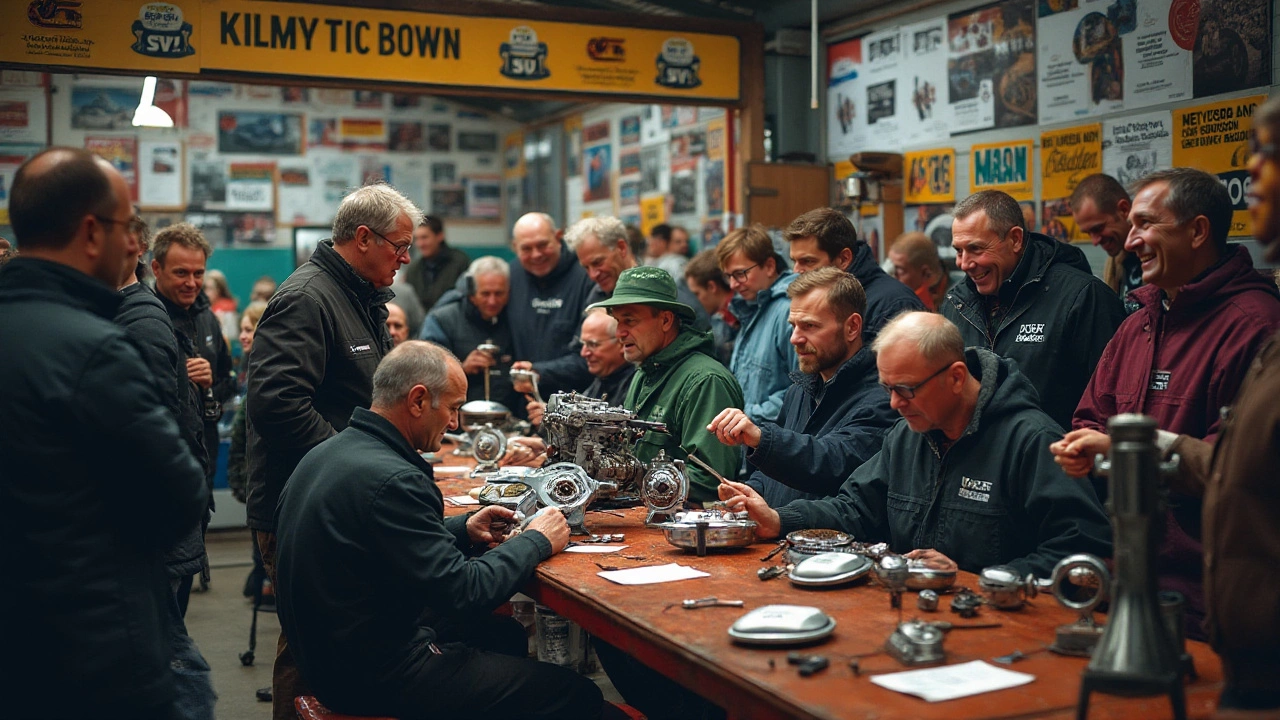
Interesting Facts and FAQs
When it comes to boosting your car's performance with a Stage 2 clutch, there’s much more than meets the eye. These clutches are designed not only for improved durability but for exquisite handling and performance on diverse tracks and roads. Did you know that a Stage 2 clutch kit typically has higher torque capacity? This means it can handle more power from souped-up engines, which is essential for high-performance or racing vehicles, offering a more aggressive pedal feel that appeals to many tuning enthusiasts. Another fascinating aspect is the clutch disc material; it often includes Kevlar or carbon-composite surfaces that ensure better heat resistance and longevity. Such materials are what make these kits stand out, catering to those eager to push their vehicles to the limit while ensuring performance never takes a backseat.
The installation of a Stage 2 clutch kit is something that might intrigue many DIY auto enthusiasts. However, there's more than just bolting it onto your car. The process requires precision, as the alignment and calibration substantially affect performance. Proper installation can enhance performance, while errors could result in car tremors or premature wear. Many skilled mechanics suggest checking the connected components like the clutch release bearing and flywheel, as their interaction is key to the smooth operation of your upgraded clutch system. Modern enthusiasts often share their experiences on forums, highlighting unusual symptoms like unusual noises or vibrations that are typically associated with misalignment or improper installation.
Is there a good reason to choose a Stage 2 clutch over a standard upgrade? Many drivers find themselves pondering this question. The reality is, not everyone needs a Stage 2 clutch. These systems are best suited for individuals who engage in frequent performance driving or who are inclined toward motor sports. One interesting note from a 2023 survey by Car Enthusiast Magazine revealed that around 40% of car modifiers opted for Stage 2 kits after engaging in competitive motorsport events.
"Choosing a Stage 2 clutch is about matching your driving habits to technical capabilities," noted Tom Jensen, a renowned auto engineer. "It's like giving your car a pair of wings when it needs to fly."Knowing this, it becomes clear that a Stage 2 clutch's real potential is unlocked when you're ready to take on the performance-oriented challenge it offers.
If you're considering making the shift, understanding the common FAQs surrounding these clutch kits can be an invaluable step. One frequent concern is, how long does a Stage 2 clutch last? The answer often depends on use. Under normal driving conditions, these clutches can last as long as standard ones, although aggressive driving naturally decreases their lifespan. Another popular question involves the effects on fuel efficiency. While increased torque may offer more powerful acceleration, it doesn't drastically affect fuel efficiency unless the additional torque is being used extensively. Lastly, many users wonder if the ride comfort changes noticeably. While these kits do introduce a firmer pedal, for many this trade-off is minor compared to the benefits of enhanced performance and reliability.


